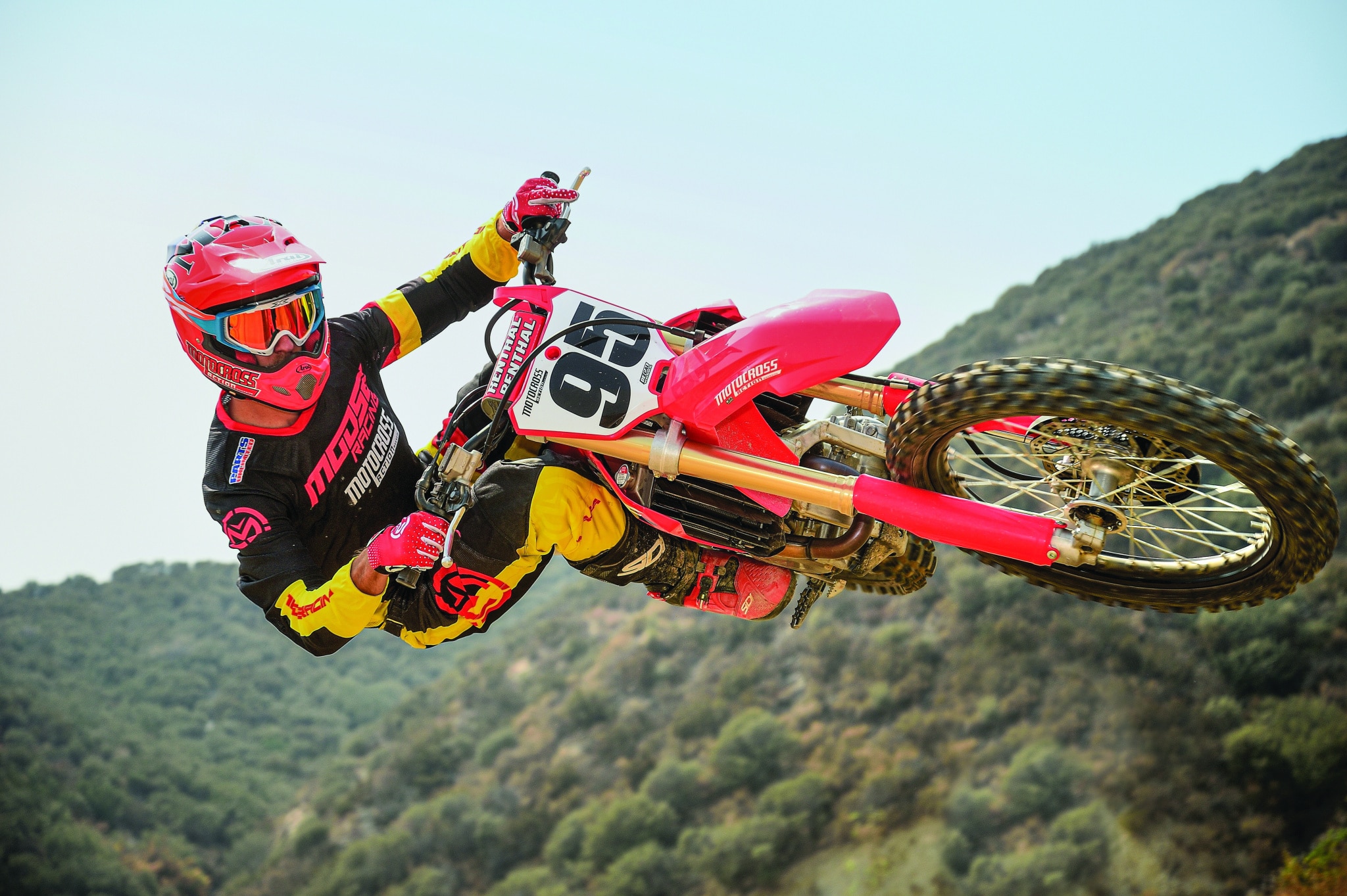MXA TECH SPEC: DIAGNOSING THE 2021 HONDA CRF450’S OVERSTEER
Every production motorcycle comes with its own set of unique traits, determined to some degree by the decisions the designer makes when drawing up the blueprints, but in greater part by the ever unfolding choices that the engineers make during the prototype, pre-pro and final production stages. The development of a modern motocross bike isn’t formulaic. There are no right or wrong equations, because each piece is altered by its companion piece. Greatness comes when everything works in unison. And when it doesn’t, it is the man who put his hard-earned cash on the line who has to diagnose where the glitch lies. Take the 2021 Honda CRF450 forks as an example.
The first thing that a 2021 CRF450 rider should notice is that the CRF450 forks are soft. The softness exhibits its worst traits in big bumps, jump landings and under hard braking. Since the 2021 Honda CRF450 comes with the same 5.0 N/mm fork springs as the 2021 KX450 and Suzuki RM-Z450, which are also on the soft side, the quick solution is to up the spring rate by going to stiffer 5.1 N/mm or 5.2 N/mm fork springs (this solution worked wonders on the 2020–’21 KX450).
GREATNESS COMES WHEN EVERY PIECE OF A MOTORCYCLE WORKS IN UNISON. ON THE 2021 HONDA CRF450, HONDA’S ENGINEERS AND TEST RIDERS HAD A SERIOUS MISCOMMUNICATION ON FORK DAMPING THAT SPILLED OVER INTO OTHER CRITICAL AREAS OF THE CRF450’S PERFORMANCE.
However, stiffer springs aren’t the end-all, be-all solution to the CRF450’s Showa fork woes. While stiffer springs help, they aren’t the ultimate answer because the Showa forks lack sufficient compression damping in the mid-stroke. This is made evident by the swiftness of the fork’s tendency to dive through its travel. Every MXA test rider felt that the damping was where the CRF450’s fork problem lived. To test this hypothesis, MXA came up with a Gyro Gearloose experiment to test the benefits of more damping without touching the stock fork-leg internals. Our quick test was to take one fork leg, valved by MX Tech, from our modified 2020 CRF450 and put it on one side of the 2021 CRF450. The re-valved MX-Tech forks had abundant damping possibilities, much greater than the range of the stock 2021 Showa forks. With one re-valved fork and one stock fork, we sent test riders out to run through the MX-Tech fork’s compression clickers. Voila! The additional damping in one leg delivered a big improvement on bump absorption and dive control (the only caveat was that the 2020 fork leg was 5mm shorter than the 2021 leg, so we had to adjust them in the triple clamps at different heights). This simple test told us that re-valving the 2021 Showa forks was the proper step, with the additional option of going up on the spring rate if necessary for the rider’s speed, weight or track conditions.
Eliminating the excessive dive under braking was a big plus. Forks that dive under braking give up the more progressive damping found higher in the fork’s stroke. Once the CRF450 forks dive, the force of even small chatter bumps is magnified at corner entrance—to say nothing about actual bumps and jump landings. Worse yet, the diving front forks steepen the head angle of the chassis, which introduces “oversteer.”
Oversteer is when the front wheel turns in sharply, but the rear wheel refuses to follow the same arc. The 2021 CRF450’s best trait is how accurate it is at turn-in. Every MXA test rider loved the 2021 CRF450 on corner entrance; however, it is possible to have “too much of a good thing,” and that aptly describes what happens on the 2021 CRF450. When the front end dives, it puts tremendous pressure on the front of the CRF450, which is now turning so tightly that the reluctant rear wheel cannot mimic the front wheel’s tight arc and is forced to step out. In effect, the front wheel has turned in too quickly for the rear wheel to follow, so the back of the bike pivots from the steering head axis and doesn’t enter the corner on the same arc as the front of the bike. With the rear wheel askew, it tends to spin the rear tire and wreak havoc on corner accuracy.
Greatness comes when every piece of a motorcycle works in unison. On the 2021 Honda CRF450, Honda’s engineers and test riders had a serious miscommunication on fork damping that spilled over into other critical areas of the CRF450’s performance.





Comments are closed.